HOW TO DRAW AND PAINT A SNOWPLOW
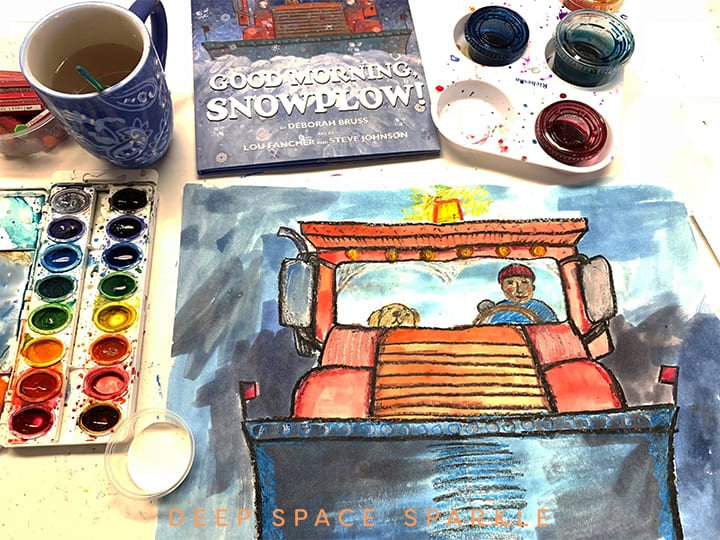
Are you buried under snow? If you’re experiencing that kind of winter, embrace the deluge and create an art project that pays homage to our best winter friends: snowplows!
This lesson was inspired by the FABULOUS book, Good Morning Snowplow, written by Deborah Bruss and illustrated by the fab duo, Lou Fancher and Steven Johnson. This is truly a perfect book for art teachers. The short, snappy rhymes pairs beautifully with the colorful (who knew winter could have so much color?) winter snowscapes.
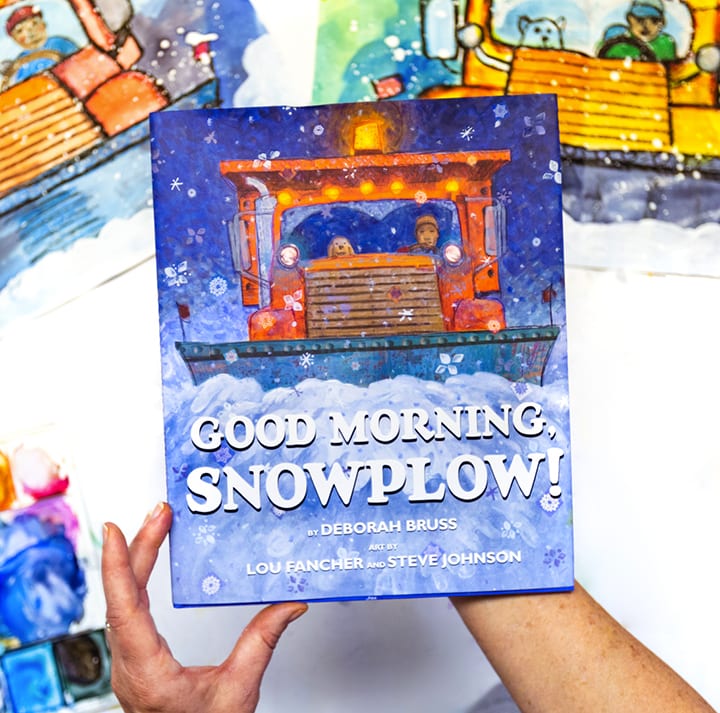
Let’s get started….
What You’ll Need:
12″ x 18″ white drawing paper (I use Tru-Ray Sulphite paper)
Black oil pastel (a must)
Crayons
Liquid watercolor OR pan watercolor paints
White liquid tempera paint
Snowplow handout (see below to get yours)
How to Draw a Symmetrical Snowplow
I used the cover of the book as inspiration for an easy drawing for children, but using the same art supplies, children can use any of the illustrations as inspiration.
But for simplicity, let’s try the symmetrical version:
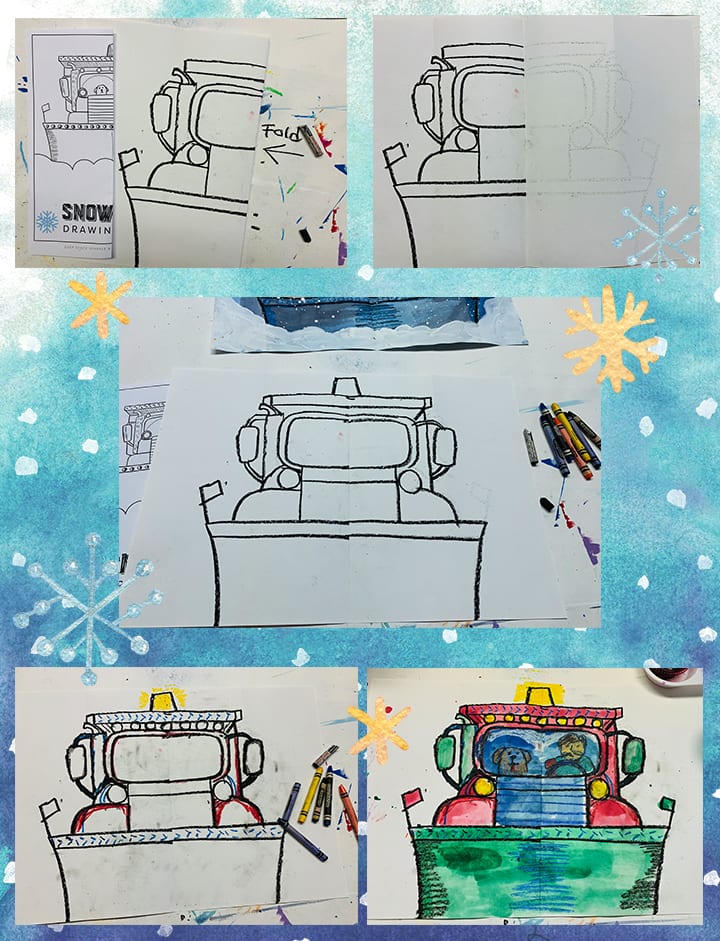
Fold paper in half horizontally. Fold drawing guide in half along the dotted lines. Place both on drawing surface and make sure the folded edge on both papers points in the same direction. (see upper left picture)
Starting with the top of the snowplow, draw a thin rectangle. Then draw a rounded rectangle for the window.
Next is the snowplow blade. Connect the blade to the window with a line. This becomes the engine hood.
Draw the details to the sides of the windows including pipe, mirrors and headlights.
When you have the basic shape of the snowplow drawn, fold paper in half so the oil pastel is on the inside. Rub the paper with your hand so that the oil pastel will transfer to the other side.
Open up paper and redraw the lines.
Now use crayons to add details such as the texture on the roof, lights, rivets on the blade, driver and his furry friend, etc.
TIP: Don’t be afraid to color OVER the black oil pastel. Really get kids to embrace this as coloring over the black pastel with a colored crayon will create shadows and a depth to the artwork.
Coloring the Snowplow:
When the children are finished adding their crayon details, use watercolor paints to paint the rest of the snowplow and background.
Encourage children to consider bright colors for their snowplow so it will stand out against the dark night sky. Look at the illustrations in the picture book for added inspiration.
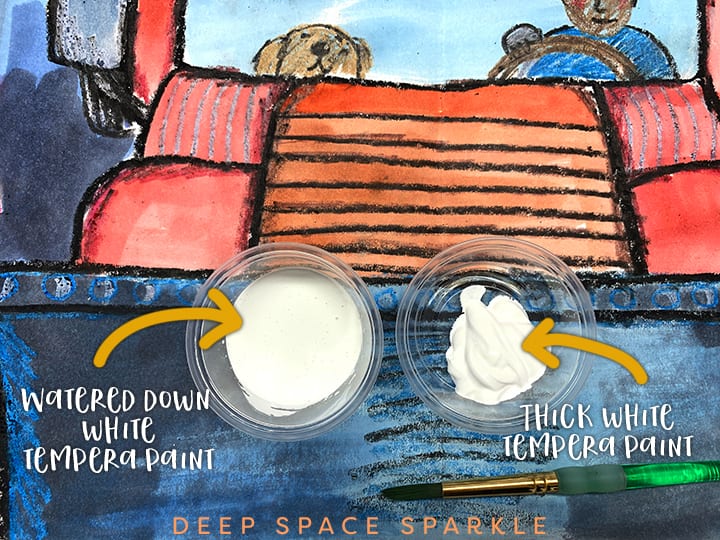
After the watercolor dries, use two types of liquid tempera paint for the snow.
I like Crayola Premiere Liquid Tempera but any good tempera paint will work. Faber-Castell is another great brand.
In one small cup, mix some water to the thick liquid paint. Stir until you get the consistency of heavy cream. This is perfect for splattering the snowflakes over the paper.
In another cup, use the white paint without adding any water. This is perfect for painting OVER the watercolor so that it looks like snow. You want the paint to be really thick for this or else it won’t cover the watercolor.
CLICK THE BUTTON BELOW TO ACCESS DRAWING HANDOUT
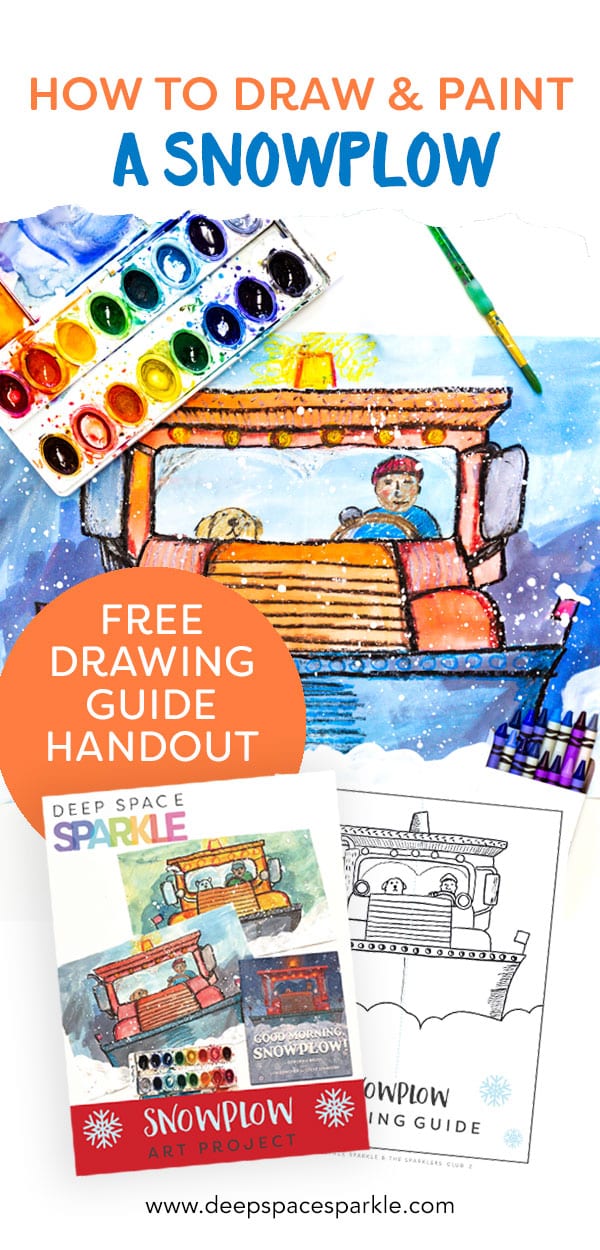

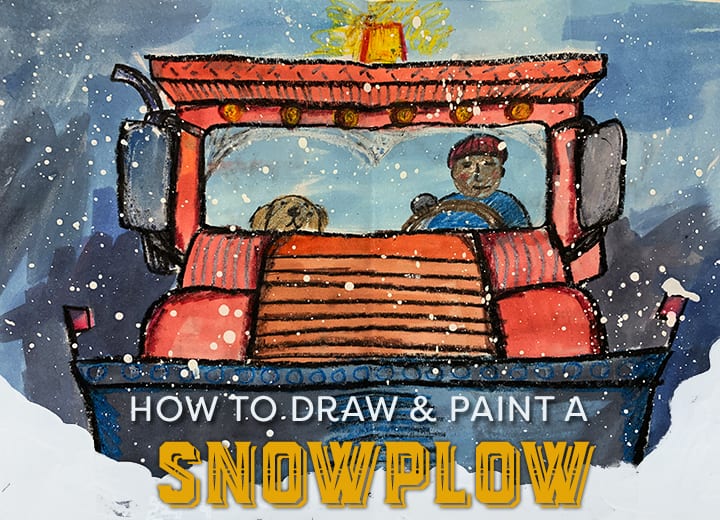












This is so cute!! A lot of steps but well worth it for these little fingers.
Thank you. I am learning so much and I am loving it!
Always so clearly and specifically explained. Thanks…the lessons are always a success!
Thank you
Have you posted the video yet? It doesn’t open.
Thanks
Yes. It’s available via Facebook embedded in the post. You can also view directly ion facebook:https://www.facebook.com/DeepSpaceSparklePage/videos/2237318163192723/
I can’t wait to do this today with my second graders!
Sorry, I am confused. In the picture it shows a cup of watered down white tempera paint but below the instructions say its important for the 2nd cup to NOT have any water added to it. What is the watered down white paint for?
Hi Christine,
The watered down paint is for the splatters of snow on the paper. The “snow”/white paint should be the consistency of half & half creamer ? The thick white paint is for the bottom of the paper where the snow is piled up in front of the snowplow.
-Hannah (Team Sparkle)
can white acrylic paint be used as White liquid tempera paint?
Hi Jonah! Great question. Acrylic paint can be used in place of liquid tempera paint.
Where did the video for this project go?
Hi! The video was from a Facebook live in 2013, and it is no longer available. Please feel free to reach out to support@deepspacesparkle.com if you have any other questions.
What a wonderful, creative art project!!!!! Especially for those of us who live in areas with lots of snow!!! 🙂 Thank you for this!! 🙂
nice,interessant!!!
Fun!
i like this project
The handouts will not open and I am unable to locate the handouts needed to complete the snowplow guide.
Hi Shari! Thanks for your interest in our lesson. Everything is working on our end. If you click the download button and add your email address we will send the lesson directly to your inbox. Something we’ve noticed is that our system works best with either the Chrome or Safari browser. Be sure to check your Spam or Junk folders to make sure it didn’t end up there. Enjoy.
Like the multi step lesson .